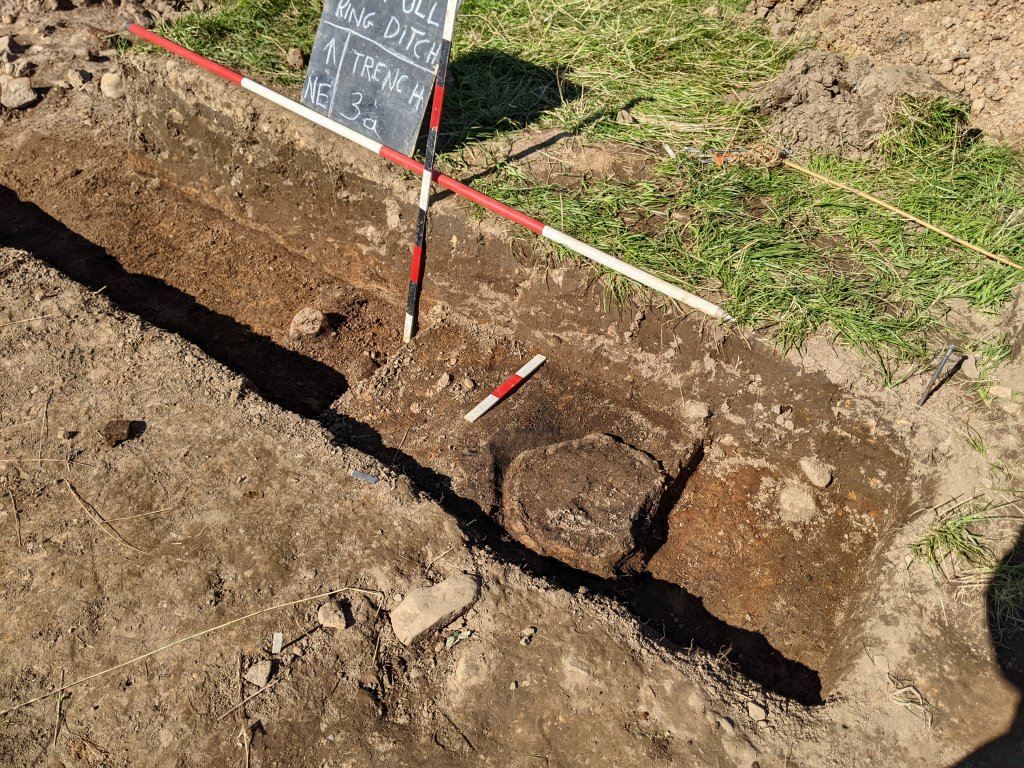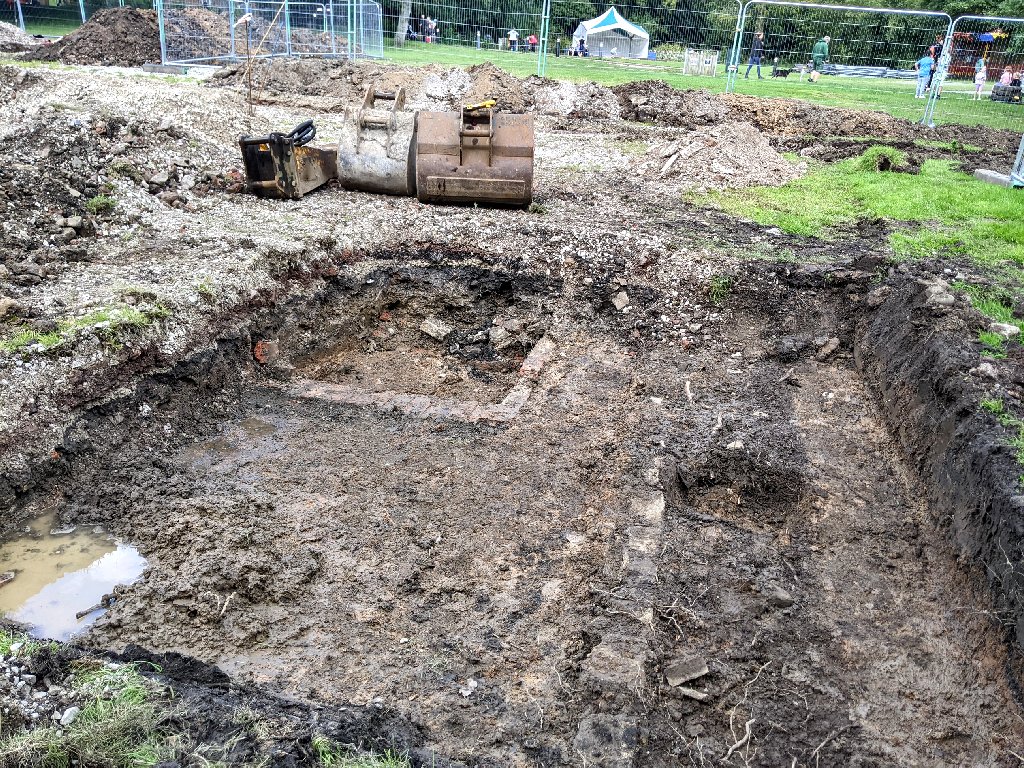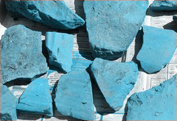
Such a lot to report on this month, but perhaps the most spectacular is the discovery of a cremation urn in one of our trenches at the Aspull dig. It came unexpectedly as it was quite near the surface and away from the main area of investigation. However, it does confirm that we are excavating an ancient funerary monument, which means we are being extra careful now when trowelling all areas. As mentioned last time, we had driven a trench towards the centre chasing the natural ground surface. We had come across a dense area of stones, which further excavations have shown to continue beyond the central area. This has also revealed a large area of burning in the form of a thin layer of black (containing charcoal) lying directly on top of the stones. Intriguingly this has a thin dark red layer above it (experiments have shown extreme heat on the iron-rich sandstone also produces this colour but the texture of the layer suggests a silty sand). Lying above all this, and directly below the plough soil, is a layer of mottled sandy clay with banding, which could be the result of turfs. To get an idea of the extent of these features, a trench was opened up at 90° in line with Trench 3. This revealed more of the same but the stones seemed to peter out after just a few metres. However the red/black line, with the mottled clay on top, did not. It was while investigating how far this went that we came across telltale flecks of cremated bone. They lay in a patch of burnt material lying inside the unmistakable profile of a ceramic pot. The pit it seems to be lying in has cut into the mottled clay and red/black layers, therefore the burial must be later. However only bottom section survives, the rest probably destroyed by ploughing. This being human remains, we realised he had to inform the coroner and soon after reporting, two perplexed police officers arrived to take away a few pieces of cremated bone (evidence of a possible crime). One was overheard to say, 'I don't think we're going to solve this one'. For now our find has been covered over, but work continues on the rest site which seems to have the potential for more fascinating discoveries. As usual you can follow our progress on our diary here.
Summer Trips
Martland Mill to Crooke. Great turnout for this trip which took us around many of the historic sites along the Leeds and Liverpool Canal, on the outskirts of Wigan. Jim Meehan, our guide, had researched this area as part of our Douglas River Project which included the discovery of the location of the old Martland Mill itself. You can find out more detail of the trip on our blog site here. Anglezarke and Rivington. For our more active members, this trip included the Prehistoric monuments such as Pikestones, and historic sites such as the Lead Mine Clough. Our guide this time was Derek Cartwright who runs the Horwich Heritage Centre. Again details can be found on our blog site here.
Haigh Hall Excavation

Last week we were invited to witness an excavation of a site in the Park grounds being carried out by Oxford Archaeology North. This was in advance of landscaping for an ornamental garden to be created by Al and Al who are the new creative directors for the Hall's ambitious development, which includes the Kitchen Garden and Plantation Gates. This has been made possible by the Government's levelling up cash (and matched funding from the Council). The site of the excavation however was on the terrace in front of the Stables and happened to be just where we carried out a GPR survey a few years ago (Newsletter 189).
In fact, the result seemed to confirm our survey. There are no plans to go any deeper as the landscaping will only be superficial, but it was very interesting to see remnant of the previous structures on this historic site.
Next Meeting
Wednesday 6th September - at the Real Crafty on Upper Dicconson Street starting at 7.30pm as usual. Change of plan this month, we were to have Kevin Horsley talking about the excavations of the old Newton-le-Willows racecourse. However he is no longer able to fulfil the date so Derek Cartwright has agreed, at short notice, to swap with his November date, to give his talk on 'Rivington Moors after the fires' (it's a sort of follow up to the guided walk he took our members on last month). The fires destroyed vast area of moorland with devastating effects on the ecology. On the plus side however it had the potential to reveal more ancient sites. It'll be fascinating to find out more, so hope you can make it.
|



